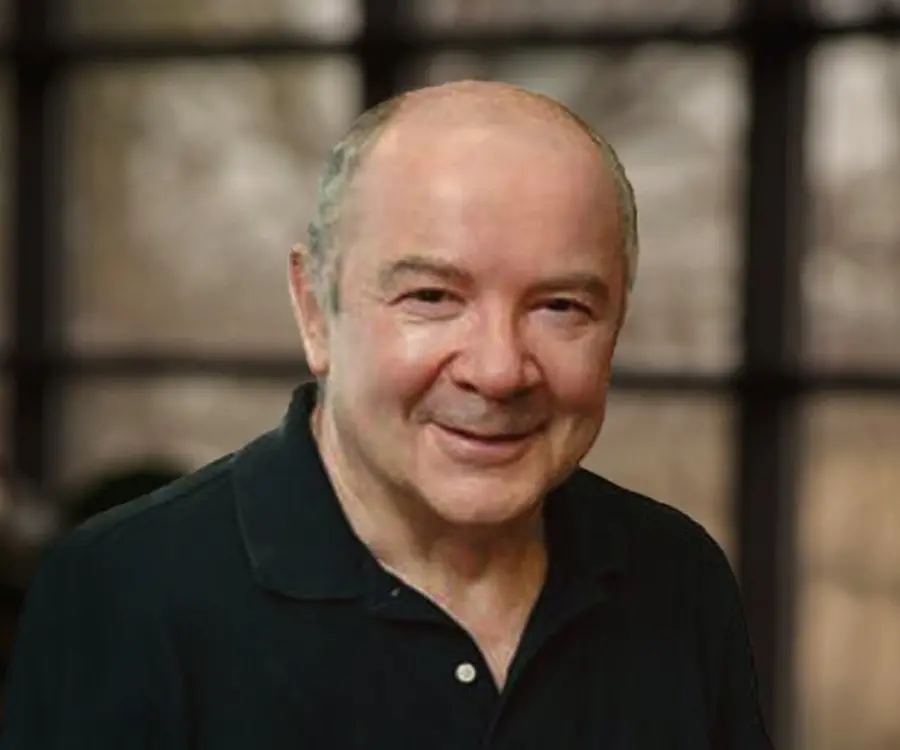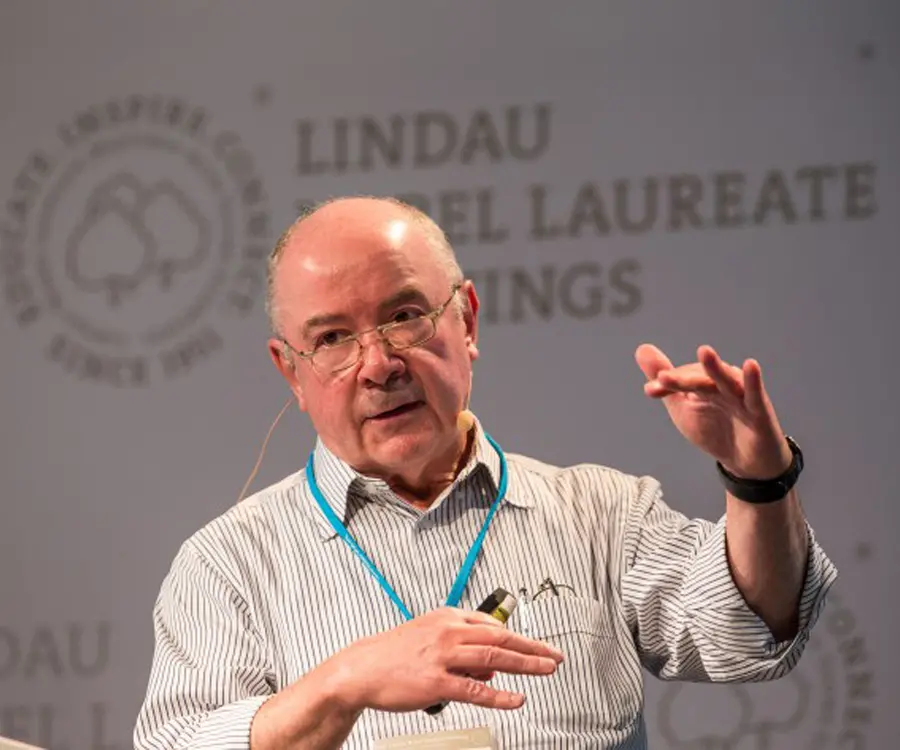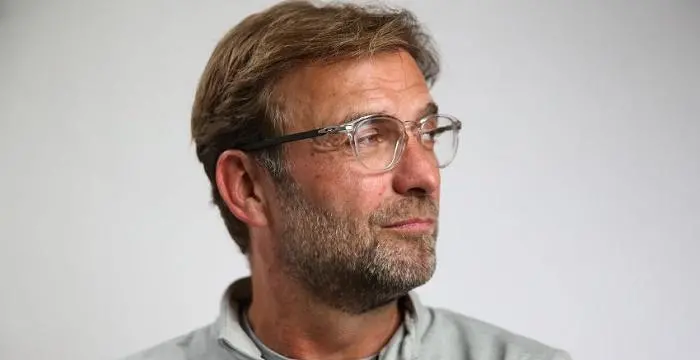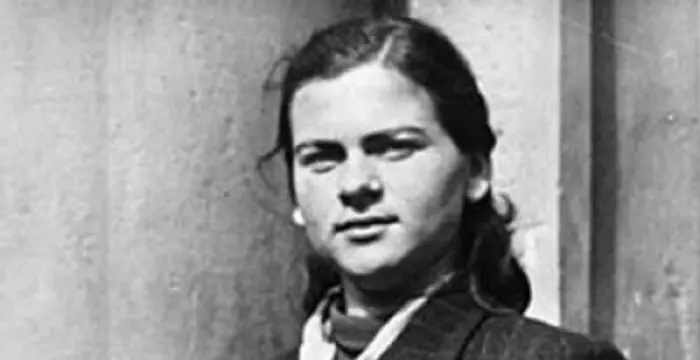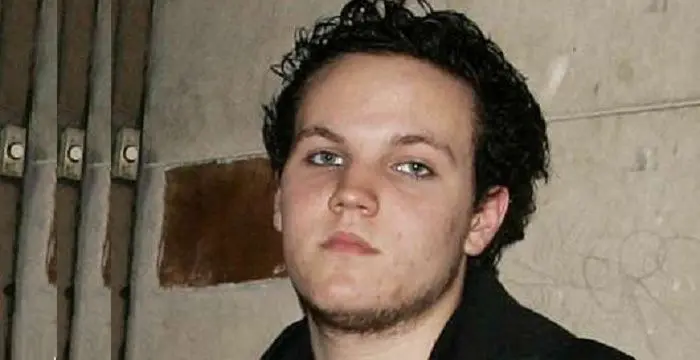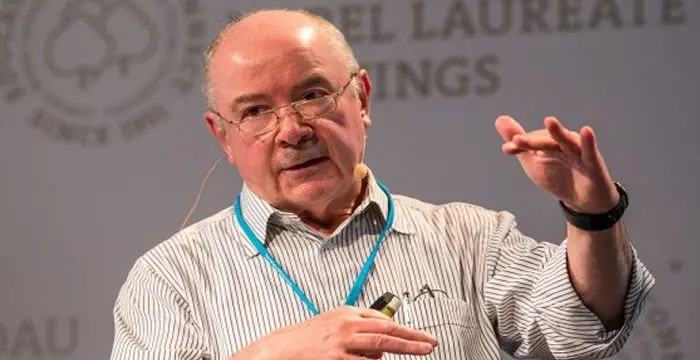
Johann Deisenhofer - Scientists, Timeline and Childhood
Johann Deisenhofer's Personal Details
Johann Deisenhofer is a German biochemist who determined the three-dimensional structure of the photosynthetic reaction center
| Information | Detail |
|---|---|
| Birthday | September 30, 1943 |
| Nationality | German |
| Famous | Scientists, Biochemists |
| Universities |
|
| Birth Place | Zusamaltheim, Bavaria, Germany |
| Gender | Male |
| Father | Johann Deisenhofer |
| Mother | Thekla |
| Sun Sign | Libra |
| Born in | Zusamaltheim, Bavaria, Germany |
| Famous as | Biochemist |
// Famous Scientists
Juliane Koepcke
Juliane Koepcke is a German-Peruvian biologist, who was the lone survivor among the 92 passengers and crew of the ill-fated LANSA Flight 508 that crashed in the Peruvian rainforest on 24 December 1971. Know more about her life in this biography.
Henry Cavendish
Henry Cavendish was a theoretical chemist and physicist, renowned for discovery of hydrogen and calculation of the mass of earth. To know more about his childhood, profile, timeline and career read on
Konstantin Tsiolkovsky
Konstantin Tsiolkovsky was a Russian rocket scientist and a pioneer of astronautics. This biography provides detailed information about his childhood, family, personal life, career, achievements, etc.
Johann Deisenhofer's photo
Who is Johann Deisenhofer?
Johann Deisenhofer is a German biochemist known for determining the three-dimensional structure of the photosynthetic reaction centre. For the same, he was awarded a Nobel Prize in Chemistry in 1988. He shared the prize with Robert Huber and Hartmut Michel. Deisenhofer’s discovery of the structure was revolutionary as it augmented the general understanding of the mechanisms of photosynthesis and revealed similarities between the photosynthetic processes of plants and bacteria. His experience in the application of X-ray technology as a tool to analyse the structure of crystallized substances resulted in the first-ever mapping of the structure of those molecules involved in the chemical reaction integral to the conversion process. Interestingly, Deisenhofer’s fancy with the physical world commenced when he was a child. Much against the wishes of his farmer parents who deemed farming as a future for their son, Deisenhofer expressed his interest in academics. He was fascinated by the astronomical problems and the physical world and soon found his real calling in physics. During his graduation studies he drifted to biophysics, an upcoming genre of physics then. His most important work came in the decade of 1980s when he worked at the Max Planck Institute. Currently, Deisehofer lives in United States and serves as a professor at the Department of Biophysics at the University of Texas Southwestern Medical Center.
// Famous Biochemists
Robert Huber
Robert Huber is a German biochemist and Nobel Laureate. Check out this biography to know about his childhood, life, achievements, works & timeline.
Charles Best
Charles Best was a great scientist and a renowned physiologist who is remembered for being the co-discoverer of insulin. Read this biography to learn about his profile, childhood, life and timeline.
Isaac Asimov
Isaac Asimov was an American professor of biochemistry and a renowned author of science fiction and popular science books. Read this biography to know more about his life.
Childhood & Early Life
Johann Deisenhofer was born on September 30, 1943 in Zusamaltheim, Bavaria, Germany to Thekla and Johann Deisenhofer. He has a younger sister, Antonie.
Upon returning from military service, senior Deisenhofer took to working at the family farm. He expected his son to tread on the same path but young Deisenhofer was interested in academics. He entered elementary school in 1949.
In 1956, he was sent to a series of boarding schools wherein he gained his higher education. Subsequently, he enrolled at the Augsburg's Holbein Gymnasium, graduating from the same in 1963.
Upon graduating, Deisenhofer attempted Germany’s qualifying examination. He secured a state scholarship that allowed him to attend the Technical University in Munich. However, to gain admission, he had to fulfill the requirement of a year and half of military service.
Following his military service, Deisenhofer began his studies at the University. Ever since a boy, he was fascinated by the astronomical problems and the physical world. As such, he dedicated his university study on the subject.
During his university education, he was drawn to the study of solid-state physics, the study of the composition and structure of condensed matter and solids. He was encouraged by his professors to explore and learn about the then upcoming genre of physics - biophysics - which was a study of biology using the principles of physical science.
He graduated with a diploma in physics from the University in 1971. The same year, his first ever scientific paper was published under the title, Physical Review Letters.
Continuing higher studies in the field of biophysics, he enrolled at the prestigious Max-Planck Institute for Biochemistry as a doctoral candidate. He studied under the direction of Institute’s director, Robert Huber.
While at the Max Planck institute, he dedicated his time to study of the technique of X-ray crystallography. He worked together with Wolfgang Steigemannon the crystallographic refinement of the structure of bovine pancreatic trypsin inhibitor. In 1974, he submitted a thesis based on his work with Steigemann. The following year, the duo came up with a paper on their work titled ‘Acta Crystallographica’.
Career
Upon completing his PhD from Max Planck Institute, he took up the post of a postdoctoral fellow at the Institute offered to him by Huber. He worked as a research scientist alongside Huber, making advances in the applications for X-ray crystallography.
Apart from lab work, he designed computer programs that could process the data obtained from the X-ray techniques and produce a map of the atomic structure of the substance in question.
In 1976, Deisenhofer was appointed as a staff scientist at the Institute. Together with Peter M. Colman and Walter Palm, he started working on the human myeloma protein Kol. He collaborated with Huber to work on Peter Colman's work on the human Fc-fragment, and its complex with an Fc-binding fragment from protein A from Staphylococcus aureus. It was in 1980 that the refinement of these structures was finished.
Deisenhofer got involved in a variety of projects at Huber’s laboratory including human C3a, citrate synthase, and alpha-1 -proteinase inhibitor. Furthermore, he continued with his fascination for computers, developing and maintaining crystallographic software.
In 1979, German biophysicist Hartmut Michel joined Huber’s laboratory. Michel was engaged in the ongoing study of photosynthesis in the hopes of finding a way to obtain a thorough analysis of the molecules involved in the complex chemical-reaction process.
In 1981, Michel came up with a way to crystallize the photosynthetic reaction center of a purple bacterium, Rhodopseudomonasviridis. Next, Deisenhofer joined Michel in the latter’s study to determine the three-dimensional structure of the molecule. His experience in X-ray crystallography helped to analyze and map the photosynthetic reaction center.
With the help of several assistants, Deisenhofer was finally able to use X-ray crystallography techniques to map the more than 10,000 atoms within the membrane protein complex of Rhodopseudomonasviridis and produce the first three-dimensional structural analysis of a photosynthetic reaction center. It took him less than three years to come up with his findings.
Measuring the X-ray diffraction with the aid of electronic devices that had replaced the standard X-ray film was an easy task. However, the actual computer modelling process deemed out to be tough. It took Deisenhofer another two years to refine his research of the model of the membrane protein.
Using custom-designed software and a high-speed computer to quickly perform the myriad of calculations required to establish the location within the cell of each of the many thousands of atoms contained in that single crystallized protein, Deisenhofer meticulously supervised the slow formation of the model.
The program devised by Deisenhofer, took the data relating to X-ray diffraction, combined it with the predetermined wavelength of the relevant radiation, and translated the resulting data into a three-dimensional computer model thus replacing the classic ball-and-stick models used by scientists until then.
The accomplishment gained by Michel, Deisenhofer and Huber created a storm in the scientific society as it was dubbed as the most important advancement in the understanding of photosynthesis since the mid-1960s. For their massive achievement, they were honored with the prestigious Nobel Prize.
Upon receiving the Nobel Prize, Deisenhofer came into limelight. He gained overnight stardom for his research work. Following his superlative success, he was asked to present papers and appeared at a host of science-related functions
In 1988, Deisenhofer moved to the United States, leaving his position at the Max Planck Institute. In the US, he accepted the Virginia and Edward Linthicum Distinguished Chair in Biomolecular Science at the University of Texas Southwestern Medical Center (UTSMC) at Dallas. He served as a Regental Professor
Other than serving as a Regental Professor, Deisenhofer accepted a position of an investigator at the Dallas unit of the Howard Hughes Medical Institute. Therein, he promoted the use of X-ray crystallography in the study of water-soluble proteins, membrane proteins, and other macromolecules and developed additional crystallographic software.
In 1993, he collaborated with fellow scientist James R. Norris of the Argonne National Laboratory writing the two-volume book, ‘The Photosynthetic Reaction Center’. The book was based on research originating from his Nobel Prize-winning investigation into photosynthesis.
Currently, Deisenhofer serves on the board of advisors of Scientists and Engineers for America. Also, he serves as a Professor at the Department of Biophysics at the University of Texas Southwestern Medical Center.
Major Works
When Hartmut Michel, who had successfully achieved the first crystallisation of a membrane protein complex, expressed his desire to carry out an X-ray structure analysis of the crystal, it was Deisenhofer who came to help him. Deisenhofer used X-rays to examine the crystal that Michel had grown. After meticulous studies, he finally determined the three-dimensional structure of the photosynthetic reaction center in 1985. The research was crucial as it increased the general understanding of the mechanisms of photosynthesis and revealed similarities between the photosynthetic processes of plants and bacteria.
Awards & Achievements
Deisenhofer’s most promising achievement came in 1988 when he was bestowed with the prestigious Nobel Prize in Chemistry, along with his colleagues Hartmut Michel and Robert Huber for determining the structure for the photosynthetic reaction center.
In 1986, he along with Hartmut Michel was bestowed with the American Physical Society's Biological Physics Prize.
In 1988, he was presented with Germany’s Otto-Bayer Prize.
He was honored with the Knight Commander's Cross of the German Order of Merit and the Bavarian Order of Merit.
He was conferred with honorary degrees from the most reputed institutions including Drury College of Springfield, Missouri, and Burdwan University of West Bengal, India.
From 1992, he was a fellow of the American Association for the Advancement of Science. Later in 2001, he was named an Argonne fellow.
He is a member of several scientific societies including American Crystallographic Association, the German and U.S affiliates of the Biophysical Society, the German Society for Biological Chemistry, the Protein Society and Academia Europaea, Sigma Xi. He was honored as a foreign associate of the U.S. National Academy of Sciences since 1997.
Additionally, he served on the University of Chicago board of governors for the Argonne National Laboratory
In 2002, he was inducted into the Texas Science Hall of Fame
Personal Life & Legacy
He met his future wife, Kirsten Fischer Lindahl at the Howard Hughes Medical Institute and the two got married in 1989.
// Famous German peoples
Jordan Carver
Jordan Carver is a famous German model. Let’s take a close look at her personal life, including her age, career, net worth, achievements and some fun facts.
Jürgen Klopp
Jürgen Klopp is a German football manager, and a former professional football player. Check out this biography to know more about his childhood, family, personal life, etc.
Irma Grese
Irma Grese was a notorious German Nazi concentration camp guard during the Second World War. This biography profiles her childhood, life, horrifying acts, death and other facts.
Johann Deisenhofer's awards
| Year | Name | Award |
|---|---|---|
Other | ||
| 0 | Max Delbruck Prize (1986) | |
| 0 | Nobel Prize for Chemistry (1988) | |
Johann Deisenhofer biography timelines
- // 30th Sep 1943Johann Deisenhofer was born on September 30, 1943 in Zusamaltheim, Bavaria, Germany to Thekla and Johann Deisenhofer. He has a younger sister, Antonie.
- // 1949Upon returning from military service, senior Deisenhofer took to working at the family farm. He expected his son to tread on the same path but young Deisenhofer was interested in academics. He entered elementary school in 1949.
- // 1956 To 1963In 1956, he was sent to a series of boarding schools wherein he gained his higher education. Subsequently, he enrolled at the Augsburg's Holbein Gymnasium, graduating from the same in 1963.
- // 1971He graduated with a diploma in physics from the University in 1971. The same year, his first ever scientific paper was published under the title, Physical Review Letters.
- // 1974While at the Max Planck institute, he dedicated his time to study of the technique of X-ray crystallography. He worked together with Wolfgang Steigemannon the crystallographic refinement of the structure of bovine pancreatic trypsin inhibitor. In 1974, he submitted a thesis based on his work with Steigemann. The following year, the duo came up with a paper on their work titled ‘Acta Crystallographica’.
- // 1976 To 1980In 1976, Deisenhofer was appointed as a staff scientist at the Institute. Together with Peter M. Colman and Walter Palm, he started working on the human myeloma protein Kol. He collaborated with Huber to work on Peter Colman's work on the human Fc-fragment, and its complex with an Fc-binding fragment from protein A from Staphylococcus aureus. It was in 1980 that the refinement of these structures was finished.
- // 1979In 1979, German biophysicist Hartmut Michel joined Huber’s laboratory. Michel was engaged in the ongoing study of photosynthesis in the hopes of finding a way to obtain a thorough analysis of the molecules involved in the complex chemical-reaction process.
- // 1981In 1981, Michel came up with a way to crystallize the photosynthetic reaction center of a purple bacterium, Rhodopseudomonasviridis. Next, Deisenhofer joined Michel in the latter’s study to determine the three-dimensional structure of the molecule. His experience in X-ray crystallography helped to analyze and map the photosynthetic reaction center.
- // 1985When Hartmut Michel, who had successfully achieved the first crystallisation of a membrane protein complex, expressed his desire to carry out an X-ray structure analysis of the crystal, it was Deisenhofer who came to help him. Deisenhofer used X-rays to examine the crystal that Michel had grown. After meticulous studies, he finally determined the three-dimensional structure of the photosynthetic reaction center in 1985. The research was crucial as it increased the general understanding of the mechanisms of photosynthesis and revealed similarities between the photosynthetic processes of plants and bacteria.
- // 1986In 1986, he along with Hartmut Michel was bestowed with the American Physical Society's Biological Physics Prize.
- // 1988In 1988, Deisenhofer moved to the United States, leaving his position at the Max Planck Institute. In the US, he accepted the Virginia and Edward Linthicum Distinguished Chair in Biomolecular Science at the University of Texas Southwestern Medical Center (UTSMC) at Dallas. He served as a Regental Professor
- // 1988In 1988, he was presented with Germany’s Otto-Bayer Prize.
- // 1989He met his future wife, Kirsten Fischer Lindahl at the Howard Hughes Medical Institute and the two got married in 1989.
- // 1992 To 2001From 1992, he was a fellow of the American Association for the Advancement of Science. Later in 2001, he was named an Argonne fellow.
- // 1993In 1993, he collaborated with fellow scientist James R. Norris of the Argonne National Laboratory writing the two-volume book, ‘The Photosynthetic Reaction Center’. The book was based on research originating from his Nobel Prize-winning investigation into photosynthesis.
- // 1997He is a member of several scientific societies including American Crystallographic Association, the German and U.S affiliates of the Biophysical Society, the German Society for Biological Chemistry, the Protein Society and Academia Europaea, Sigma Xi. He was honored as a foreign associate of the U.S. National Academy of Sciences since 1997.
- // 2002In 2002, he was inducted into the Texas Science Hall of Fame
// Famous Libra Celebrities peoples
Melissa Brim
Melissa Brim is the ex-girlfriend of former professional boxer Floyd Mayweather Jr. Check out this biography to know about her birthday, childhood, family life, achievements and fun facts about her.
Jacob Tremblay
Jacob Tremblay is a Canadian child actor. Let’s have a look at his family & personal life including age, birthday, relationships, net worth and fun facts.
Sierra Furtado
Check out all that you wanted to know about Sierra Furtado, the famous YouTube Personality; her birthday, her family and personal life, her boyfriend, fun trivia facts and more.
Sexxy Lexxy
Alexis Smith Walker, popularly known as Sexxy Lexxy, is an African-American singer. Check out this biography to know about her birthday, childhood, family life, achievements, and fun facts about her.
Benjamin Keough
Benjamin Keough is an American socialite who is best known as the grandson and look-alike of legendary musician Elvis Presley.
Lizzie LDShadowLady
Check out all that you wanted to know about Lizzie LDShadowLady, the famous YouTuber and gamer; her birthday, her family and personal life, her boyfriend, fun trivia facts and more.
Johann Deisenhofer's FAQ
What is Johann Deisenhofer birthday?
Johann Deisenhofer was born at 1943-09-30
Where is Johann Deisenhofer's birth place?
Johann Deisenhofer was born in Zusamaltheim, Bavaria, Germany
What is Johann Deisenhofer nationalities?
Johann Deisenhofer's nationalities is German
What was Johann Deisenhofer universities?
Johann Deisenhofer studied at Technical University of Munich, Max Planck Institute for Biochemistry
Who is Johann Deisenhofer's father?
Johann Deisenhofer's father is Johann Deisenhofer
Who is Johann Deisenhofer's mother?
Johann Deisenhofer's mother is Thekla
What is Johann Deisenhofer's sun sign?
Johann Deisenhofer is Libra
How famous is Johann Deisenhofer?
Johann Deisenhofer is famouse as Biochemist



